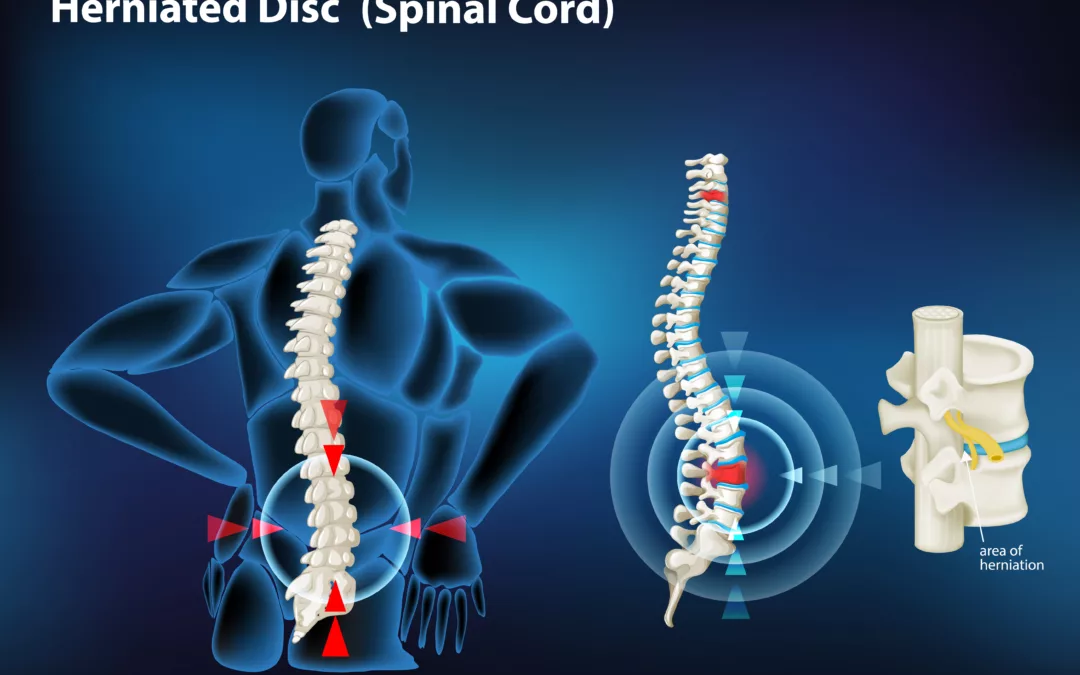CAN SPINAL DECOMPRESSION HELP HEAL A DISC HERNIATION OR SPINAL STENOSIS?
When I tell my patients that they have a disc herniation, they fear the worst – pain medications, surgeries, cortisone injections or chronic pain. But this is usually not the case. Fear and concern usually overwhelms us because when we injure our backs, we automatically think of that person that we know who has horrible back pain along with a bad quality of life. We worry that this injury is going to lead us down that same turbulent spiral.
I usually have to give my patients frequent reassurances that their disc herniations can heal without medication and surgeries. Throughout my 11 years of private practice, I’ve tried various styles of treatments to ultimately find the best recipe to heal a disc herniation. I’ve searched research articles far and wide to formulate the best system to help people with back pain.
Current evidence supports a mix of chiropractic physical therapy and soft tissue release therapy as one of the most effective ways to heal a disc herniation. Before we address my standard treatment for healing a disc herniation, we must understand how a disc herniation occurs.
HOW DOES A DISC HERNIATION OCCUR?
Often times there is a bending and twisting motion that will put the disc in a very vulnerable position. Think of our spinal discs as a jelly doughnut. If you put that jelly doughnut in between your hands, then pushed it down that jelly is going to squirt out of the side of the donut. That jelly is very similar to the material inside of the disc and the doughnut is the rest of the disc itself. Once that jelly or herniated disc pushes backward into the nerves or spinal cord, pain is likely to follow.
Numbness, tingling, burning electrocution like pain, sharp, stabbing, and muscle weaknesses often occur secondary to a disc herniation. The treatment for a disc herniation is relatively simple – take the pressure off of the nerve and you’ll be pain-free. It sounds easy but it’s actually extremely complicated.
RISKS AND CONSIDERATIONS
As with any medical intervention, there are potential risks and considerations associated with spinal decompression:
1. Cost: Our spinal decompression care plans are very affordable. While we accept most insurances from a chiropractic standpoint, spinal decompression is often not a covered service.
2. Time Commitment: Successful spinal decompression often requires a series of sessions over an extended period. We typically see improvement in symptoms within 30 days of treatments.
3. Patient Suitability: Not all individuals are suitable candidates for spinal decompression. A thorough evaluation by a healthcare professional is essential to determine if this therapy is appropriate.
4. Temporary Relief: While some patients experience immediate relief, others may find that their symptoms return after a period of time. Maintenance sessions may be necessary for some individuals.
5. Safety: When performed by trained professionals, spinal decompression is generally considered safe. However, there may be contraindications for certain patients, such as those with fractures, tumors, or severe osteoporosis. Our spinal decompression is very gentle and relaxing.
CONCLUSION
We have seen amazing results with our spinal decompression machine in Pittsburgh. This machine gently puts your spine into a position and pulls it open to allow that jelly disc material to get reabsorbed back into the disc. it takes frequent but direct repetitions of decompressing the spine to heal a disc herniation.
Not everyone is a good candidate for our spinal decompression protocol. There are certain screening factors that we utilize to make sure that somebody is going to benefit from treatment. Spinal decompression is actually very gentle. Most people close their eyes and find it fairly relaxing.
If you live in the Pittsburgh area and have concerns about a disc herniation, give our office a call to see if you are a good candidate for our spinal decompression protocol.

